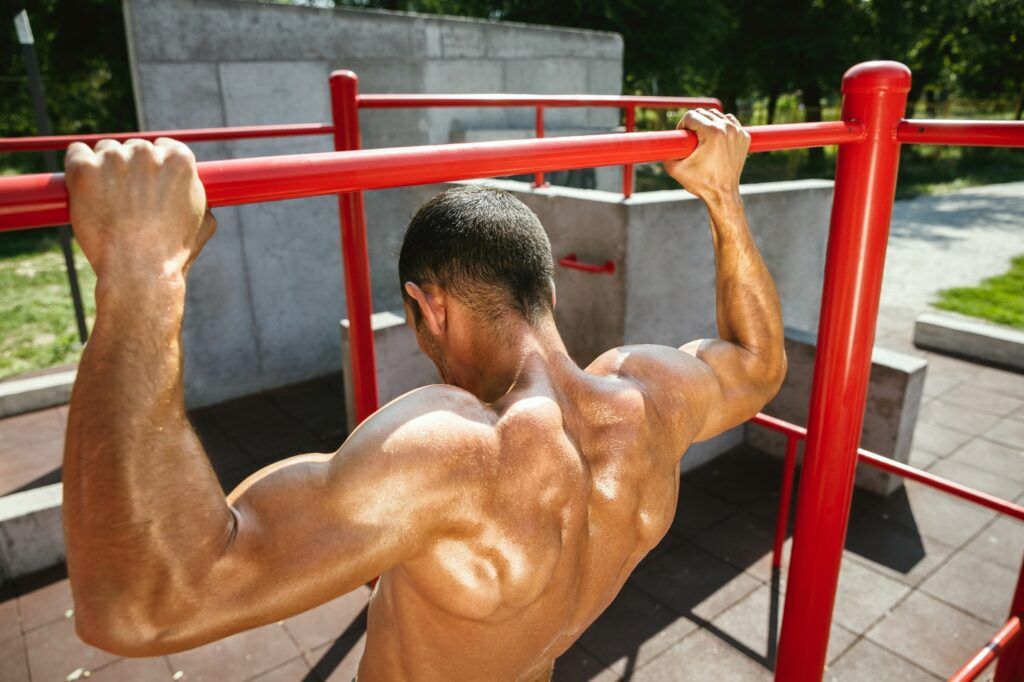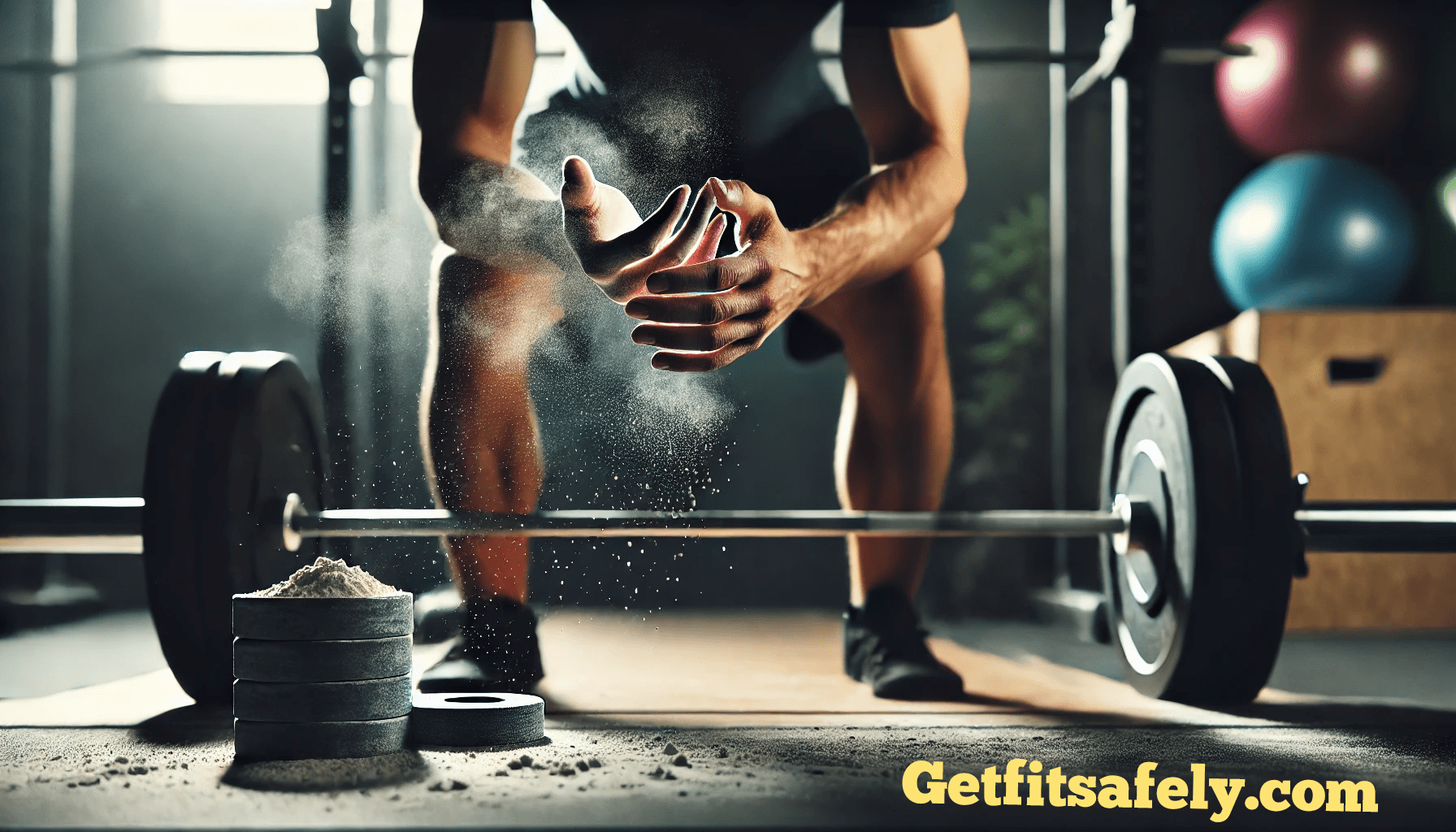Ever been in the middle of a heavy lift and feel the bar slipping out of your hands before your muscles are even tired?
It’s like trying to hold onto something that’s slipping away, and it can ruin your set.
I’ve been there—gripping as hard as I can, but still losing control.
The good news?
There’s a simple solution that can help you keep your grip solid.
Chalk might be just what you need to lift heavier and perform better.
| Pros of Using Chalk | Cons of Using Chalk |
|---|---|
| Improves grip strength, essential for heavy lifting | Can be messy and leave residue on equipment and floors |
| Reduces slipping, ensuring safer lifts during deadlifts and pull-ups | Not all gyms allow chalk due to cleanliness concerns |
| Helps achieve personal records (PRs) by enhancing grip | May dry out hands, requiring regular moisturization |
| Who Should Use Chalk | Who May Not Need Chalk |
| Heavy lifters, CrossFit athletes, or those doing grip-intensive exercises | Individuals lifting lighter weights or focusing on machine workouts |
Why Grip Strength Matters

Let me share a little story with you.
There I was, in the gym, feeling like a champ.
I loaded up the barbell for a heavy deadlift, thinking I’d be fine without chalk.
But halfway through the lift, my sweaty hands had other plans.
The bar started slipping like it had a mind of its own.
My grip just couldn’t hang on, and the weight came crashing down.
Losing control like that really threw me off.
Grip strength isn’t just some minor detail; it’s a total game-changer.
It’s not just about keeping the bar from slipping—it’s about having the strength to hold on when things get heavy.
Without a solid grip, you’re putting a cap on what you can achieve.
I realized that no matter how strong my legs or back were, if my hands couldn’t hold the weight, I was stuck.
Think about all the exercises that rely on grip: deadlifts, pull-ups, rows—you name it.
If your hands give out before your muscles do, you’re leaving gains on the table.
And let’s be real, none of us are here for half-hearted results.
So don’t let a weak grip be your Achilles’ heel.
Trust me, once I started focusing on my grip strength, everything changed.
Not only did I lift heavier, but I also felt more confident tackling everyday tasks.
Your future self will thank you—and maybe even give you a firm handshake.
Chalk: Your Secret Weapon
You might think chalk is just for gymnasts swinging on bars or rock climbers scaling cliffs.
But let me tell you about another moment where it proved essential.
I used to see guys chalking up and thought, “What’s the big deal?”
Then came the day I attempted heavy kettlebell swings without chalk.
After a few reps, my sweaty palms turned against me, and the kettlebell almost flew out of my hands mid-swing.
Luckily, I managed to regain control, but I learned my lesson!
In the gym, chalk is like a superpower for your hands.
It soaks up sweat faster than a sponge and gives you a rock-solid grip on the bar.
The first time I tried it, I felt like Spider-Man—minus the web-slinging, of course.
Suddenly, the weights didn’t feel like they were plotting against me.
No more slippery situations or mid-lift slip-ups.
I’ll never forget when I was going for a personal record on deadlifts.
A friend handed me his chalk bag, and I reluctantly gave it a try.
As soon as I gripped the bar, everything clicked.
The lift went up smoothly, and I crushed my PR!
That moment changed my whole perspective.
Powder vs. Liquid Chalk

So, you’re thinking about giving chalk a try, but you’re stuck between powder and liquid.
Which one should you choose?
Let me break it down for you.
Old-school powder chalk is the classic choice.
It’s what you’ll see in Olympic weightlifting rooms and strongman competitions.
It gets the job done, no doubt about it.
But let’s be honest—it can leave a mess.
I remember the first time I used powder chalk; by the end of my session, it looked like a blizzard had hit the gym.
There was chalk everywhere—on the floor, and even all over my clothes.
Then there’s liquid chalk—the cleaner cousin.
It goes on wet, dries quickly, and leaves a thin layer that lasts longer.
No dust clouds or chalky handprints everywhere.
I was surprised by how well it worked, even though it’s liquid.
No mess, just a solid grip for longer lifts. It was a smart upgrade for my workouts.
Each option has its benefits, so pick what suits you.
Powder for the authentic feel, or liquid for a tidier, gym-friendly choice.
Personally, I carry both in my gym bag.
Gym Etiquette: To Chalk or Not to Chalk
Hold up before you chalk up!
Believe me, I learned this the hard way.
I was all pumped to use my new chalk, ready to conquer the weights.
But as soon as I started, a gym staff member tapped me on the shoulder.
Turns out, some gyms have a strict no-chalk policy.
Who knew?
Always check the rules so you don’t end up on the staff’s naughty list.
Nobody wants to be that person leaving a trail of white dust behind.
It’s not just about the mess; it’s about respecting the shared space.
If your gym frowns upon chalk, consider using liquid chalk.
How to Apply Chalk Effectively
Start by rubbing a small amount of chalk between your palms.
Make sure to get it on the areas that make contact with the bar—usually the fingers and the base of your palms.
I remember the first time I used chalk; I went overboard and ended up leaving white handprints everywhere.
A light dusting is all you need to get that grip superpower.
Also, if you’re using liquid chalk, give it a few seconds to dry before grabbing the bar.
Trust me, waiting those extra moments makes a difference.
You’ll feel the chalk working its magic as soon as you grip the weight.
Alternatives to Chalk: Straps and Grip Aids
Maybe chalk isn’t your thing, or perhaps your gym has a strict no-chalk policy.
Don’t sweat it—literally.
There are other grip aids out there to help you hold on tight.
Wrist straps are a popular alternative.
They wrap around your wrists and the bar, taking some of the load off your grip.
I used straps for a while when I was recovering from a hand injury.
They definitely helped me keep lifting heavy without stressing my grip too much.
Then there are grip gloves and pads. Some folks swear by them, while others aren’t fans.
I tried gloves once, but found they made the bar feel thicker and less natural in my hands.
But everyone’s different.
It’s worth experimenting to see what works best for you.
Potential Downsides of Using Chalk
Alright, time for some real talk.
While chalk is fantastic, it’s not all sunshine and PRs.
There are a couple of potential downsides to keep in mind.
First, chalk can dry out your skin.
After a heavy lifting session, you might notice your hands feeling like sandpaper.
I learned this the hard way when I ended up with a few nasty calluses.
To combat this, make sure to moisturize your hands after your workouts.
A little lotion goes a long way.
Second, there’s the mess factor.
Even if your gym allows chalk, not everyone appreciates the powdery aftermath.
Be mindful of your fellow gym-goers.
A quick wipe-down of equipment after you use it shows good gym etiquette.
Lastly, relying too much on chalk might prevent you from developing grip strength naturally.
It’s a tool, but it shouldn’t become a crutch.
Balance is key.
Wrapping It Up
So, should you be using chalk for a stronger grip?
In my book, absolutely!
Chalk can seriously amp up your grip game.
I can’t tell you how many times chalk has helped me hit a new personal record.
Give it a shot and see if it helps you crush your goals.
Whether you’re deadlifting, doing pull-ups, or just want to feel like a superhero gripping that bar, chalk might be your new best friend.
Just remember to be courteous and clean up after yourself.
Nobody wants to walk into a gym that looks like a powdered donut factory exploded.
So go ahead, chalk up, and get a grip on those gains!
FAQs
Is Chalk Right for You?
If you’re into heavy lifting or cranking out high-rep pull-ups, then heck yeah, chalk could become your new best friend. But if you’re sticking to machines or lighter weights, you might not notice a big difference with chalk.
Can Chalk Help Prevent Calluses?
Chalk can actually help reduce friction between your hands and the bar, which may prevent excessive rubbing and the formation of large calluses. However, it won’t eliminate calluses entirely, so proper hand care is still important for lifters.
Does Chalk Have an Expiration Date?
No, chalk doesn’t expire or go bad, but it can get crumbly or break apart over time if not stored properly. Keeping it in a dry, sealed container will help it last longer and maintain its effectiveness.

